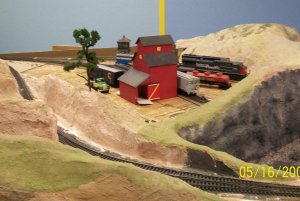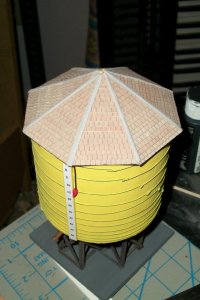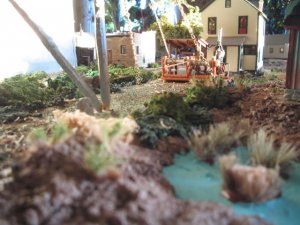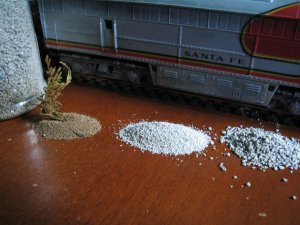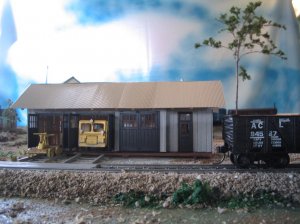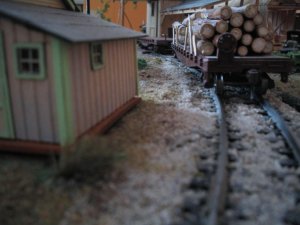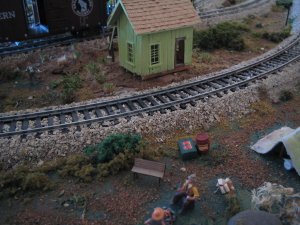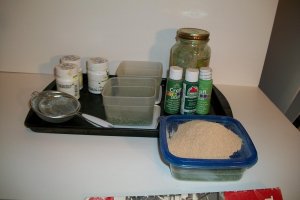logandsawman
Well-Known Member
There is more than one way to skin a cat, has the saying goes. This is where I hope we can get some good ideas on how to make stuff or use stuff that may not come off a shelf. The best, of course, being stuff that is already in your home.
And how much does this stuff cost? Some of us are seriously aware of our budgets.
My best and first is the cereal box. Here is the Emily Inn, named after my grandmother, who loathed to throw anything away. It is meant to be a stucco sided three story , rooms above cafe. Very believable for the late 40's.
It cost less than $10.00 to build. Of course, a couple of the pieces came from my scrap box. Cereal boxes made up the walls, roof, and floors/ceiling (which I put in all my buildings, as well as painted interiors. Some day I will also put in the furniture). The tarpaper is newsprint spray painted flat black and cut into scale 3' widths for authenticity. Also used on the adjacent brick building.
For the extra nit picky, this would work as a background building.
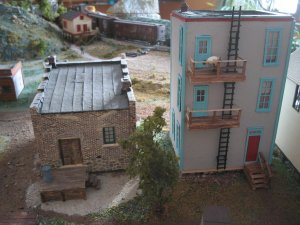
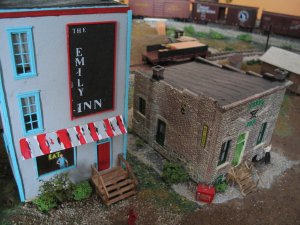
logandsawman
And how much does this stuff cost? Some of us are seriously aware of our budgets.
My best and first is the cereal box. Here is the Emily Inn, named after my grandmother, who loathed to throw anything away. It is meant to be a stucco sided three story , rooms above cafe. Very believable for the late 40's.
It cost less than $10.00 to build. Of course, a couple of the pieces came from my scrap box. Cereal boxes made up the walls, roof, and floors/ceiling (which I put in all my buildings, as well as painted interiors. Some day I will also put in the furniture). The tarpaper is newsprint spray painted flat black and cut into scale 3' widths for authenticity. Also used on the adjacent brick building.
For the extra nit picky, this would work as a background building.


logandsawman

